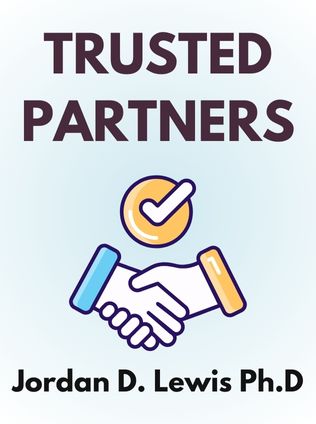
Trusted Partners
How Companies Build Mutual Trust and Win Together
By Jordan D. Lewis Ph.D.
Published 09/2007
About the Author
Jordan D. Lewis is a renowned consultant and lecturer on strategic alliances. He holds a Ph.D. and has extensive experience in advising companies on building and maintaining successful business relationships. His other notable work includes "The Connected Corporation."
Main Idea
"Trusted Partners: How Firms Build Mutual Trust and Win Together" by Jordan D. Lewis provides comprehensive guidance on developing, improving, or repairing trust within business alliances. The book emphasizes that trust is the essential glue that holds business partnerships together, enabling creativity, innovation, and mutual success. Through case studies and practical advice, Lewis outlines the conditions necessary for trust and offers strategies to ensure long-lasting, effective alliances.
Table of Contents
- How to Build Trust in Alliances
- Pick Team Players
- Define a Single Purpose
- Align Your Organizations
- Orchestrate Many Units
- Take Nothing for Granted
- Repair Broken Trust
- How to Sell Alliances to Customers
- How to Trust a Rival
- How to Build Trust in Mergers and Acquisitions
How to Build Trust in Alliances
Lewis begins by emphasizing that trust is fundamental to successful alliances. Trust is built through shared objectives, mutual needs, and strong interpersonal relationships. The eight conditions for trust include mutual need, interpersonal relationships, joint leadership, shared objectives, safeguards, commitment, adaptable organizations, and continuity.
"The glue that holds alliances together is trust – a bond that must be initiated, sustained, and grown throughout the life of the alliance." – Jordan D. Lewis
For example, the partnership between Northwest Airlines and KLM Dutch Royal Airlines struggled due to a lack of trust and misaligned objectives, nearly sinking a profitable venture.
- Ensure mutual need and shared objectives.
- Develop strong interpersonal relationships.
- Establish joint leadership to guide the alliance.
Pick Team Players
Alliances thrive on the strength of the relationships between the people involved. Investing in relationships and ensuring joint leadership are crucial. Lewis advises selecting team members with strong interpersonal skills and the ability to build trust.
"Interpersonal relationships are the conduits through which understandings flow in an alliance." – Jordan D. Lewis
For example, in the alliance between Procter & Gamble and Wal-Mart, team members were chosen for their ability to think creatively and build relationships, which contributed to the alliance's success.
- Invest in developing personal relationships with alliance partners.
- Ensure consistent joint leadership at policy and operating levels.
- Select team members based on their ability to build trust and communicate effectively.
Define a Single Purpose
Successful alliances are built on well-defined mutual objectives. These objectives should guide every aspect of the alliance, from policies to job assignments. Lewis outlines ten steps to develop mutual objectives, including defining each company's priority objectives, creating a shared vision, and deriving mutual business and financial goals.
Sign up for FREE and get access to 1,400+ books summaries.
You May Also Like
The Lean Startup
How Today's Entrepreneurs Use Continuous Innovation to Create Radically Successful Businesses
By Eric RiesWho Moved My Cheese?
An Amazing Way to Deal with Change in Your Work and in Your Life
By Spencer Johnson, M.D.Make Your Bed
Little Things That Can Change Your Life...And Maybe the World
By William H. McRavenThe Ride of a Lifetime
Lessons Learned from 15 Years as CEO of the Walt Disney Company
By Robert IgerThe Hard Thing About Hard Things
Building a Business When There Are No Easy Answers
By Ben Horowitz



















